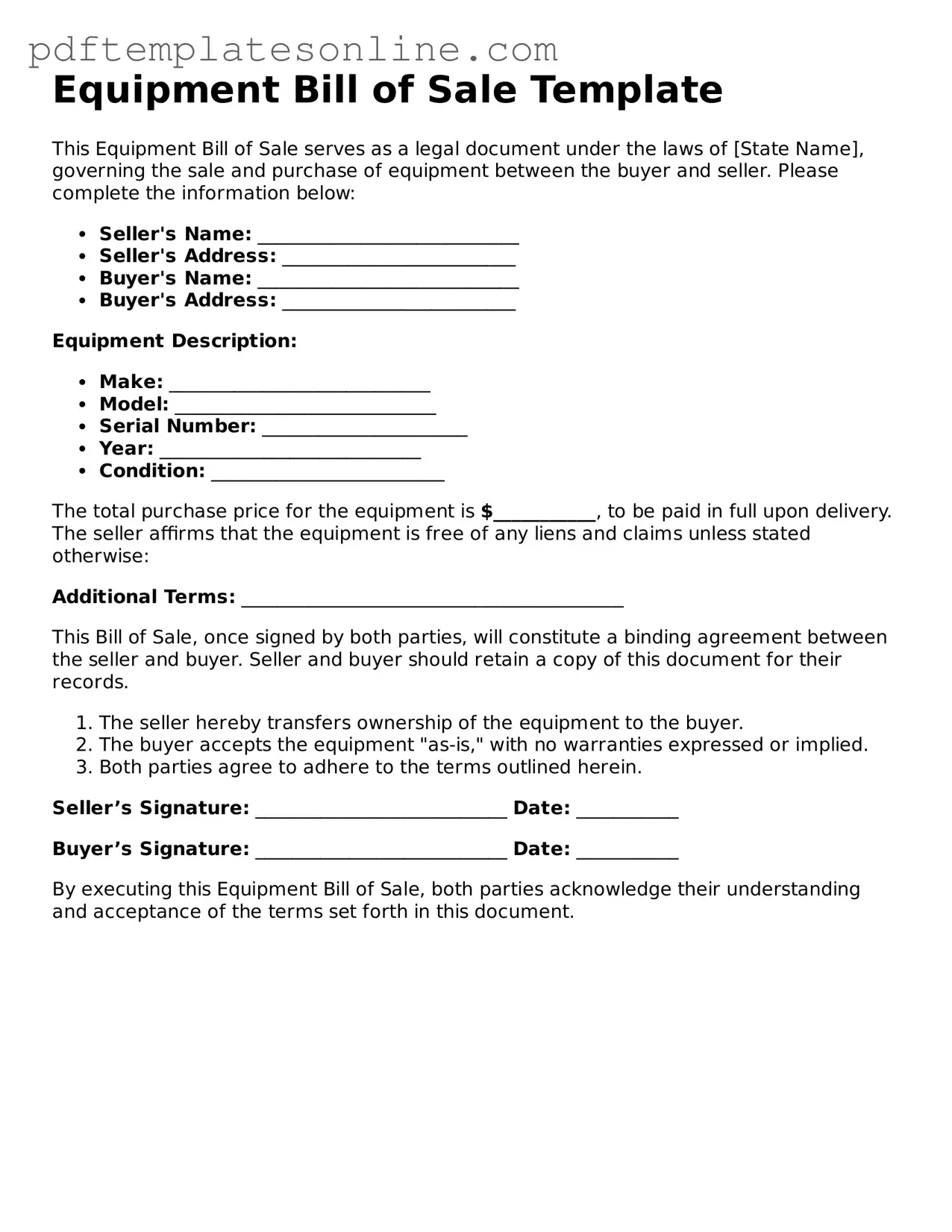Filling out an Equipment Bill of Sale form can seem straightforward, but many people make common mistakes that can lead to complications. One frequent error is failing to provide complete information about the equipment being sold. This includes not detailing the make, model, and serial number. Omitting these details can create confusion and disputes later on.
Another mistake is neglecting to include the sale price. The amount agreed upon should be clearly stated. If this information is missing, it can lead to misunderstandings about the transaction. Additionally, leaving out the date of the sale can also cause issues, especially if the equipment is involved in any disputes or legal matters down the line.
Many individuals forget to include both the seller's and buyer's full names and addresses. This information is essential for identifying the parties involved in the transaction. If either party's information is incomplete, it could complicate any future claims or legal actions.
Some people overlook the importance of signatures. A Bill of Sale is not legally binding without the signatures of both the seller and buyer. Failing to sign the document can render it useless, leaving both parties without legal protection.
Another common mistake is not including any warranties or guarantees associated with the equipment. If the seller offers a warranty, it should be clearly stated in the Bill of Sale. This protects the buyer and clarifies the seller's responsibilities.
Inaccurate descriptions of the equipment's condition can lead to disputes. Buyers need to know whether the equipment is new, used, or in need of repair. Providing an honest assessment protects both parties and builds trust.
People sometimes forget to make copies of the completed Bill of Sale. Having a copy for both the seller and buyer is crucial for record-keeping. Without this, either party may find themselves without proof of the transaction.
Lastly, individuals may not consult local laws regarding the sale of equipment. Regulations can vary by state or locality, and failing to comply with them can lead to legal issues. Always check the requirements in your area to ensure that the Bill of Sale is valid.
